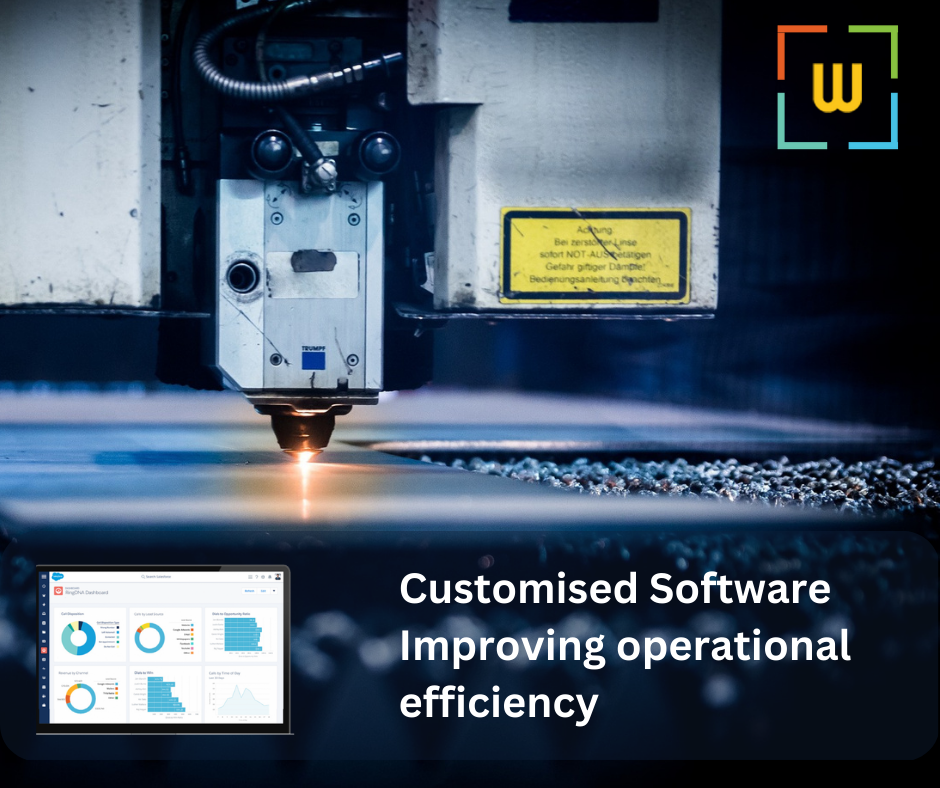Manufacturing firms are improving their operational efficiency with the help of customized Software Solutions. Major use of such kind of application is to gain visibility and to make process more efficient.
ERP is a tool widely used to manage multiple daily business process like procurement, accounting, supply chain, and human resource, etc. which is readily available in market. These solutions are mostly standalone and often needs huge modification between other process to communicate and learn from other business transactions.
In today’s era of working style where there are connected techs and connected application that fetched data from various interface, there comes a need to have an integrated application with all the business function which can learn from each function and give real time status of the process.
A software that is designed and developed taking in consideration of your business needs usually gives business a competitive edge in managing and controlling the business transaction and activities. It allows teams to be flexible and take right and quick decisions. Planning and developing such integrated software takes planning and understanding. Webassic works closely with the challenges that a business is facing and develops a solution around that.
What one should think, evaluate and consider while developing a software for their process
-
Real time Information:
Information is very important and crucial for the business process and often takes considerable amount of time to get the right information from different process. With a software of such kind one can think to have the required information on demand, hence the software should have the ability to communicate with multiple other business process and fetch the required information or else a new integrated set up can be developed within all the process. -
Flexibility and Scalability:
Software working on such a scale should be scalable and flexible as the need to upgrade the system might arrive in future. Scalability is one of the key thing to consider while developing. A software should be flexible enough to meet the requirement of business that is always growing. -
Automate and streamline process:
An integrated software allows the automation of multiple process and brings in uniformity and standardization in the business transaction. This will enable transparency in operations and allows users to improve efficiency. The software will take care of multiple process and reduce the errors, improving profitability. -
Decision making:
Software with such capabilities allows users to take quick decision with precise analytics and dedicated dashboard that is capable of having information in real time. With such control and dedicated display of information users and management can take decision quick and fast. -
Compliance and risk management:
Software to keep track of all the compliance and regulations of business is very crucial dedicated software can be developed with the feature to manage them offering additional assistance in decision making for the managers and the users. -
Asset management:
Manufacturing units often face a challenge of maintenance and downtime caused because of missing out maintenance. With integrated software now it can be managed and scheduled and even reports can be added to take notes of any kind of anomaly reported during maintenance of the assets. It helps businesses in minimizing risk and operating expense while improving productivity. -
Artificial intelligence:
It is one of the upcoming future trends and need to have feature that industries look at. Artificial intelligence is becoming part of all the process as it helps in adding value to the process and brings in scope of improvement at multiple level in business operations. AI-enabled software help companies to save time in studying large volume of data. These come in handy while addressing the reports and having situational awareness in the entire chain of process from procurement to manufacturing to delivery.
With such a tool at hand people working on multiple sheets and paper will have easy way to handle and deal with situation. The software aims to bring a uniformity in process and will have information handy at any given time. Integrated software aims to bring in efficiency to tables and most importantly they can have a single dashboard to monitor the entire production process. Asset management one of the critical area to focus will also be taken care with scheduling and planning maintenance schedules.
